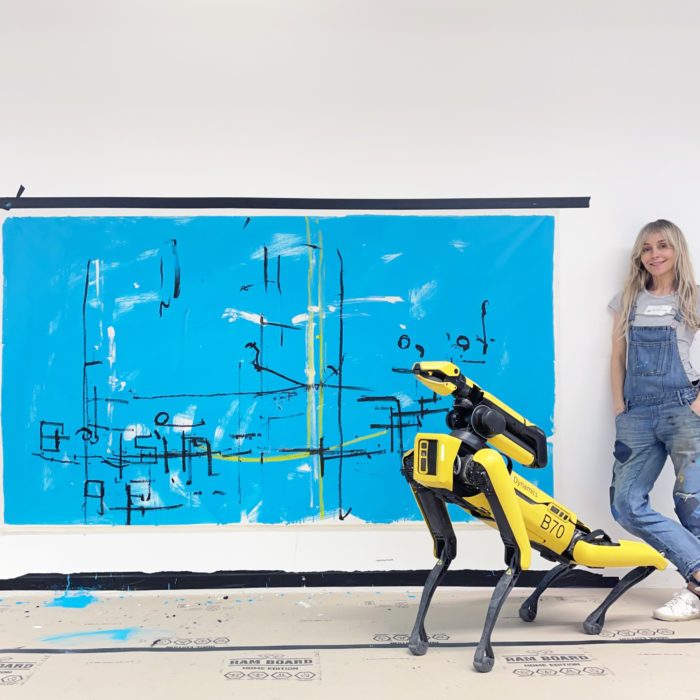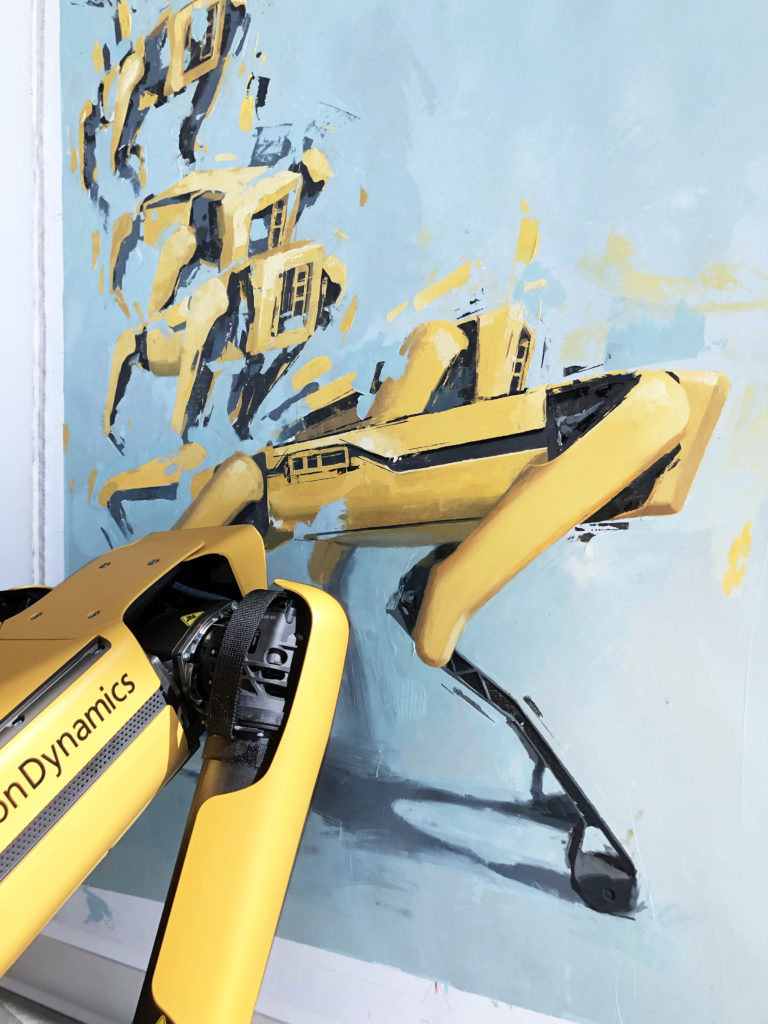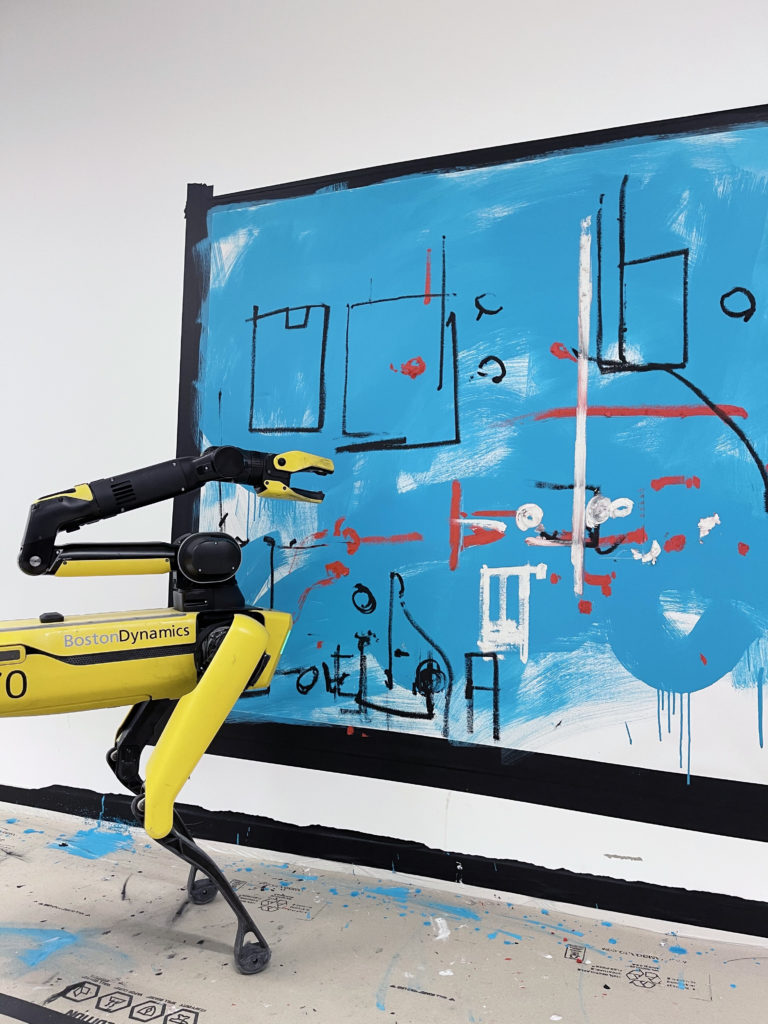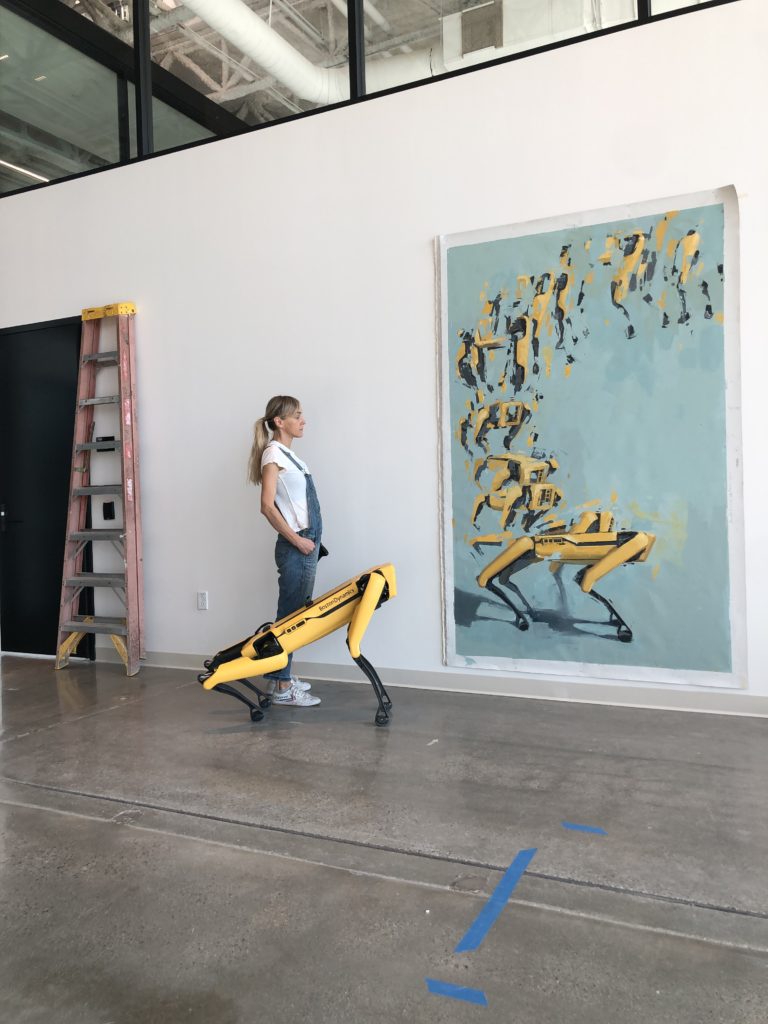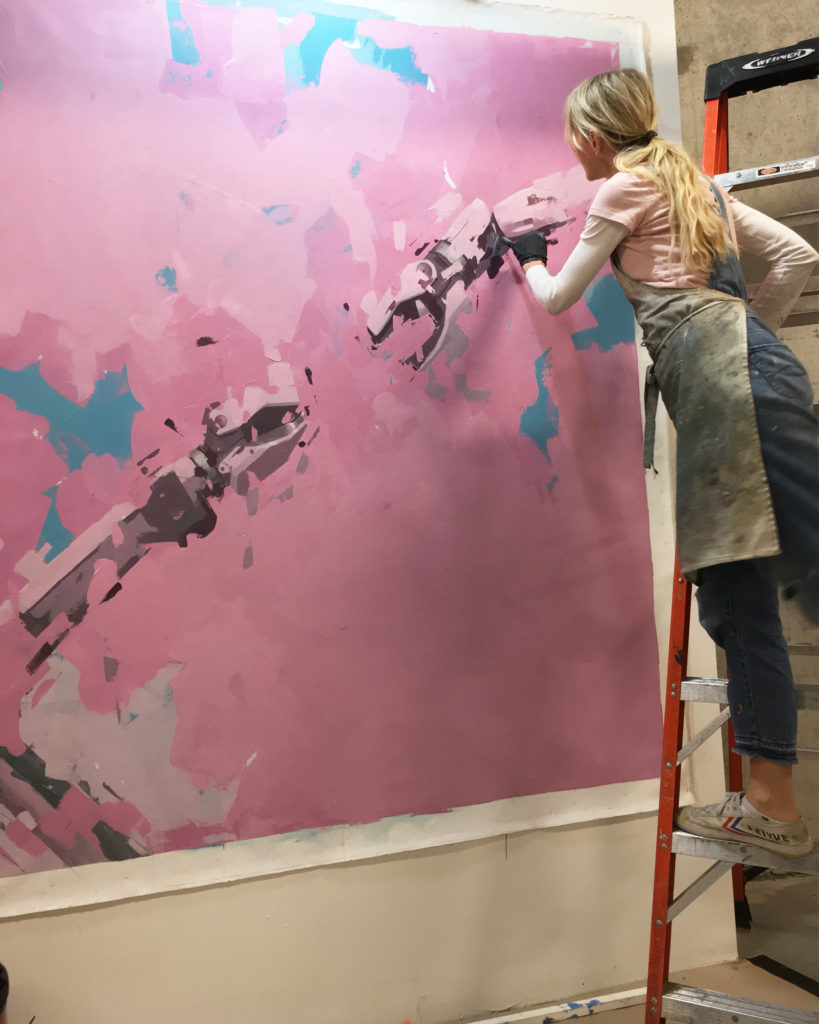It’s a glorious spring day in New York, and artist Agnieszka Pilat is giving me a tour of her studio in the World Trade Center. Her workspace is located on the 29th floor, with expansive views of the city; she’s been given the space as an artist-in-residence at the Silver Arts Program. When she’s not working in Lower Manhattan, she’s often in Boston, where she’s also a guest artist at Boston Dynamics, the robotics company where she is learning how to creatively embrace technology by engaging with robots.
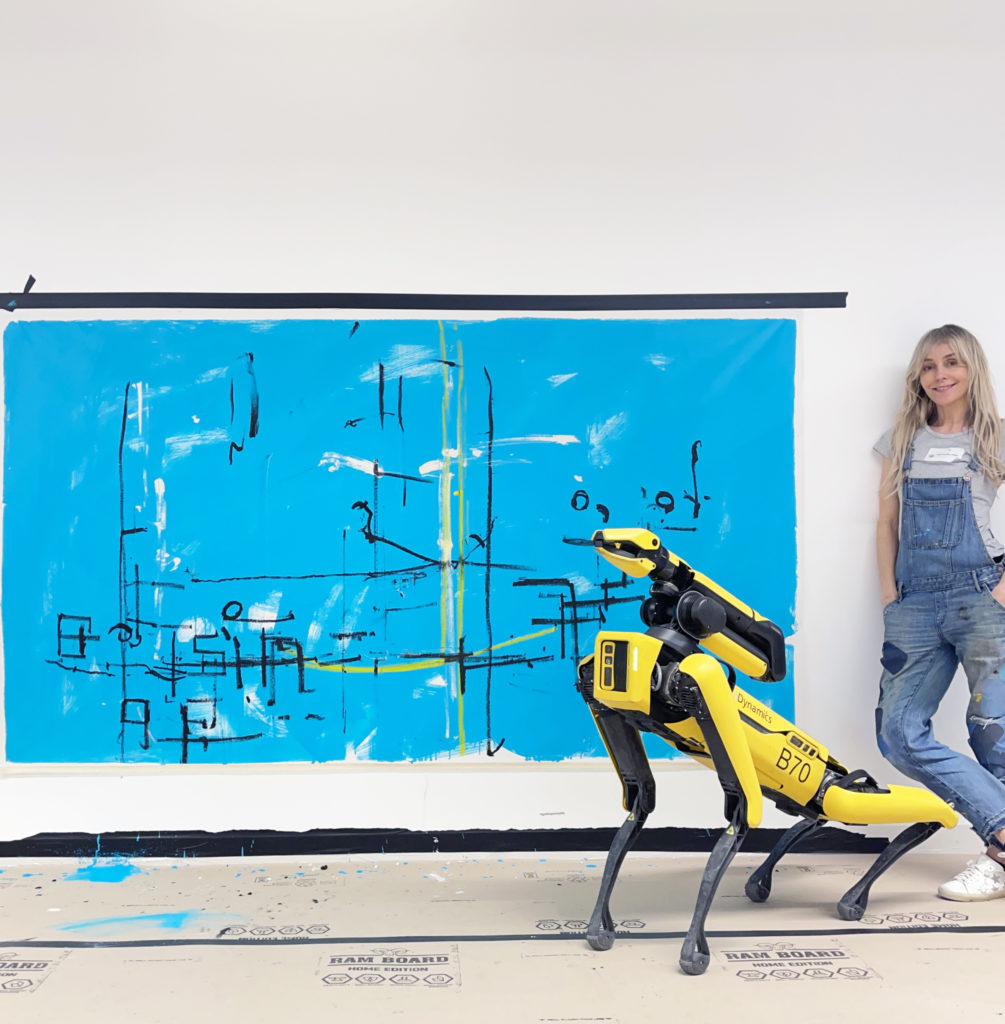
While creating at Boston Dynamics, she has been experimenting on a collaborative project with the infamous Spot robot. “I have a largely optimistic view of technology, and I have been engaging with it in my work for years as its observer and champion. At Boston Dynamics, I started experimenting with their robots to create art. I engage with Spot, for example, in a number of ways, including directly operating the robot’s actions through an interface [e.g. mark making] and making use of Spot’s automated AI behaviors [e.g. picking-up painting tools]. Spot’s mechanical intelligence directly results in artistic decisions, and the esthetics of the finished painting.”
Schooled in the European figurative tradition, Pilat’s work focuses on machine portraits. She chose portraiture because, in her words, “Portraiture mirrors the arc of civilization, reflecting hierarchies of power. We can see how portraiture is always a site for the discussion of power.” Her aim is to use traditional skills in a contemporary dialogue while referencing the legacy of 20th-century avant-garde movements, such as Futurism and Precisionism.
Originally from Poland, Pilat has had a significant career and success, which eventually led her to America. It certainly wasn’t easy, as Pilat states, “My journey to get here has been a challenging adventure. I grew up in a communist society behind the Iron Curtain. When I arrived in America, I was immediately struck by the vast scale of everything, especially industry: big factories, huge shipyards, giant machines. And the daily promise of even more great new technologies, both in robotics and in the digital realm.” This inspired Pilat to take a closer look at what was unfolding in Silicon Valley.
She witnessed something new happening: a small cluster of tech elites coming to great power and influence. Along with that, she saw the tensions that power, wealth, and inequity created in our community. This massive wealth disruption led by a very few challenged her optimism about technology. She’d ponder, “What kind of future are we heading for?” This question reflects the story behind all of her paintings.
Her most recent work, a series she calls “Automata,” includes a layer of augmented reality (AR) that allows interactivity between the audience and the paintings. When viewed with a smartphone or tablet, the paintings activate a videosequence on the viewer’s device. In the AR-activated layer, the secret actions performed by her machines are surprising and counterintuitive, inviting the viewer to consider looking at machines in a new light: machines as beings with a purpose, and with meaning that goes beyond serving man. The machines portrayed in the paintings come alive on the screen.
Her inspiration comes from technology, examining the questions it poses for the future of humanity. As Pilat says, “The friction between man and machine. The impact of technology on humanity.” She’s especially excited by new innovations, leading to her own experimentation with AR in paintings, creating an engaging contrast of old and new and depicting the clash of analog with digital.
In closing, Pilat emphasizes the importance of humanity actively considering how machines will negotiate a future of shifting power dynamics. Pilat hopes to engage with machines to make them more human-like and less threatening to the public. “People fear the unknown, but using a familiar language [portrait painting] to introduce new realities and new technology can initiate a deeper consideration of the future that will be inhabited by ordinary humans and intelligent machines with great power.”


